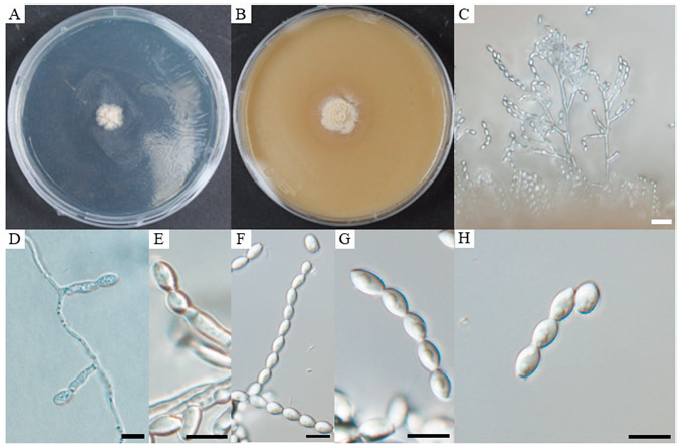Abstract
A survey of insect-associated fungi in Korea revealed a novel fungal strain isolated from the bean bug
Figures & Tables

Fig. 1. Cultural and morphological characteristics of . A, colony on potato dextrose agar (PDA) after 14 days of growth at 25℃; B, colony on oatmeal agar (OA) after 14 days of growth at 25℃; C, D, and E, conidiophores and conidiogenous cells; F, G, chain of conidia; H, conidia. Scale bars: C = 20 μm; D–H = 10 μm.


